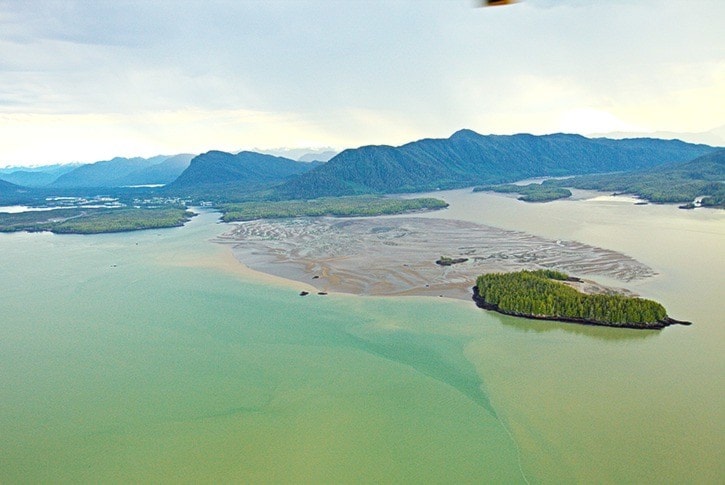Lelu Island isn't the right location for the Pacific NorthWest LNG (PNW LNG) project, according to an independent Prince Rupert scientist.
Dr. Barb Faggetter, a registered professional biologist with a bachelor of science in chemistry/biochemistry and a PhD in biological and chemical oceanography, has been publicizing the findings from her report LNG in the Skeena Estuary: What is the Risk to our Salmon?, warning of potential dangers at a number of events in recent months (as reported on in the May 14 and June 11 editions of the Northern View) and making a presentation to city council.
"I'm not absolutely anti-industry. I'm a scientist who sees issues and I want to make sure in the long run we still have a viable environment, as well as whatever we need from the industry perspective," Faggetter said.
"I'm definitely opposed to Pacific NorthWest LNG."
Her main issue is the project's proximity to Flora Banks, a region of the estuary that she said is "an extremely important juvenile salmon rearing area in the direct path of approximately 331 million juvenile salmon out-migrating from the Skeena River".
But Pacific NorthWest LNG's communications advisor Krissy Van Loon said Lelu Island is a good spot for the project.
"The island provides mostly flat terrain, it is designated for industrial use by the Prince Rupert Port Authority, it provides direct access to shipping routes to our customers in Asia, and it is geographically situated close to a potential labour pool with existing infrastructure," Van Loon said, adding the company is committed to the health of the Skeena salmon run.
"Our project has been designed to minimize potential effects to fish populations and fish habitat and we are confident that our mitigation measures will ensure the overall salmon population is not impacted."
But Faggetter said that's not likely because of dredging required for the project, which she said would be one of the biggest risks to Flora Banks and its eelgrass beds that are nursery habitat for juvenile salmon. This is because there are dioxins and furans that accumulated in the area's sediment from the former pulp mill, explained Faggetter.
Dredging would occur at two sites to allow for safe berthing and navigation of cargo ships: 615,000 cubic metres of materials at the proposed Materials Offload Facility and between 7 and 7.5 million cubic metres of sediment for the marine berth area.
"By comparison, Port Metro Vancouver annually dredges 3 to 4 million cubic metres to ensure marine traffic safety," said Van Loon.
To mitigate potential loss, Van Loon said the project will include an offsetting plan restoring or creating 240 hectares of wetland habitat, along with a fish habitat offsetting strategy.
"We are engaging First Nations and local stewardship groups to build a robust offsetting plan that complements the natural productivity of the area. This could include the placement and creation of islets, increasing eelgrass beds and their productivity," she said.
This isn't reassuring for Faggetter.
"Offsetting in general is seldom very terribly successful ... there's going to be damage, we need to know if we can tolerate that damage in the case that offsetting is not successful," she said.
"They admit themselves in their sea application report that they haven't done any studies yet. I think if they were to it would show that several of their offsetting proposals are not going to be viable."
